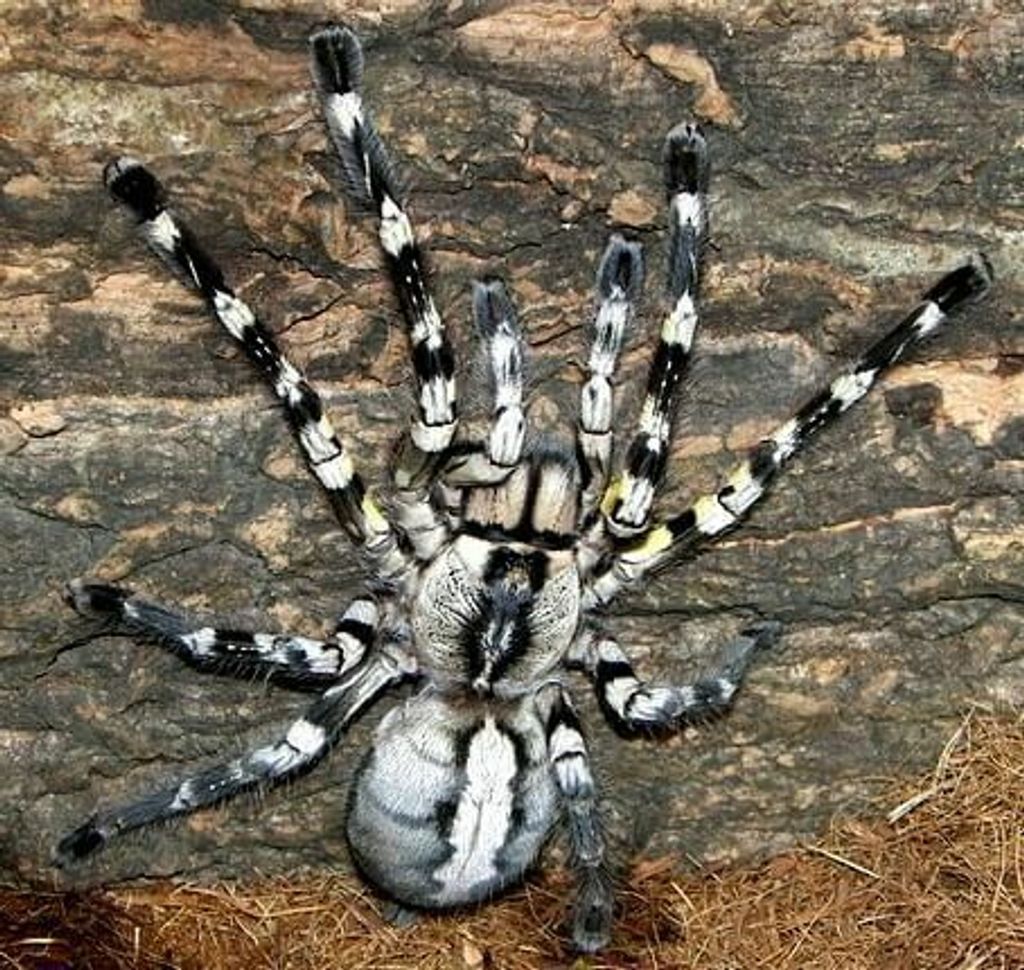ANIMAL: Indian Ornamental Tarantula Poecilotheria regalis Type of Animal: Tarantula Habitat: Forests, trees, tree holes, crevices, tree nooks/crannies Location(s): India Appearance: Gray to gray-brown bodied tarantula w/ black & white stripe & chevron pattern, bright yellow areas on undersides of front legs, females larger than males, males have thinner legs, fractal-like pattern on abdomen Food/Diet: Insects, insect larvae, other spiders (including each other), scorpions, centipedes, small frogs, lizards, small snakes, small rodents Status in Wild: Stable Conservation: Breeding from zoos, pet trade, & breeders Lifestyle: Solitary, though spiderlings sometimes live together Additional Info: Called: Male Female Young: Spiderling Group: Solitary Weight: Male: 1-2 oz Female: 2-3 oz Gestation: 9 weeks Life Span: Males: 2-4 years Females: 12-15 years Body Length: Male: 2.7 in Female: 3 in Main predators are other tarantulas (females often prey on smaller males), birds, omnivorous/carnivorous mammals, lizards, snakes, & spider wasps. Female’s legspan is 9 in, male’s is 7 in. These tarantulas spend much of their time in trees. Also called Indian Ornamental Tree Spider, King Parachute Spider, & Regal Parachute Spider. These tarantulas very shy in the wild. Males make webs, depositing sperm on surface. Males use pedipalps (short leg-like structures near mouth) in mating. After mating, female seals sperm/eggs in cocoon-like structure, which she protects. After about 9 weeks, 500-1,000 spiderlings hatch. Females often eat males after mating. These tarantulas are quite quick. Males have shorter lifespans due to smaller size & predation by females. Males occasionally breed more than once. Males sexually mature at 10 months, females at 1 years old. These spiders grow quite fast. Catch flying insects by seizing them in flight & paralyzing them. All prey is caught by paralyzing it w/ venom. Fun Fact(s): These spiders popular among tarantula enthusiasts, though they’re typically not suitable for beginners. These tarantulas often highly defensive, flashing yellow area on undersides of front legs. If posturing doesn’t work, they’ll readily bite w/ fangs, which can cause puncture wounds. Bites from this species often very painful, sometimes needing hospitalization. Occasionally, severe muscle spasms may occur.
